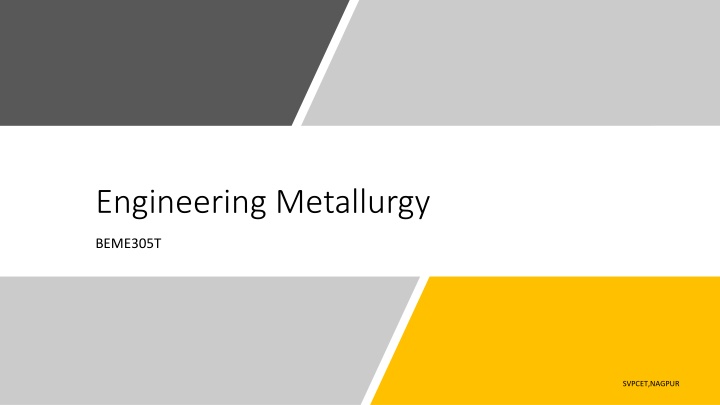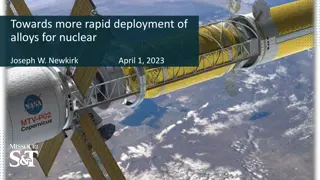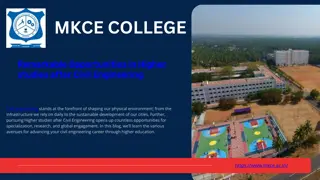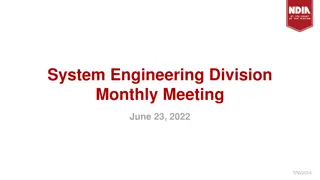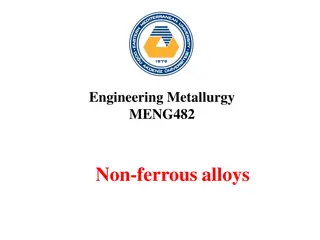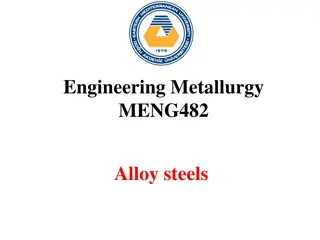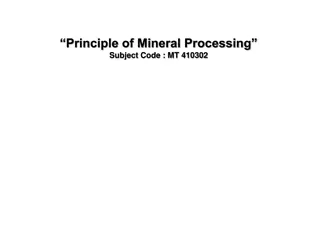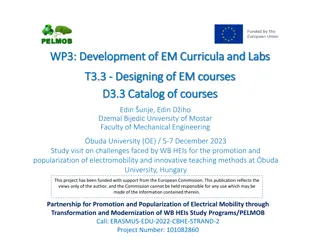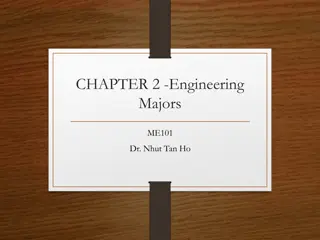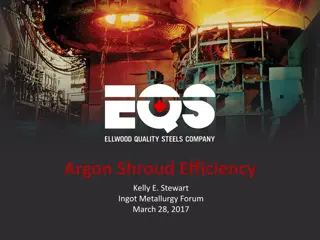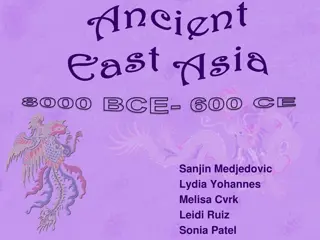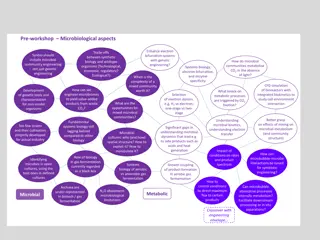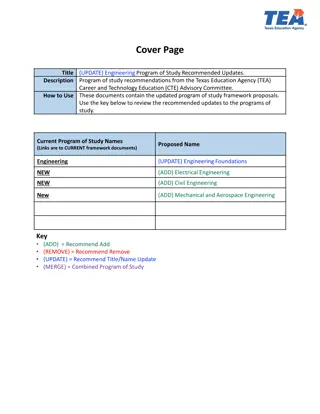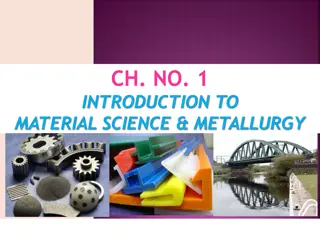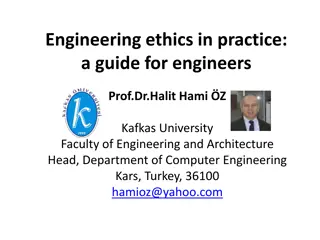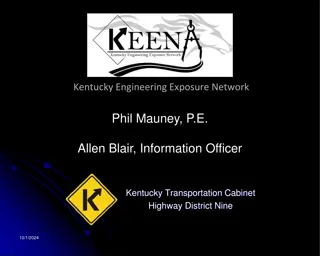Engineering Metallurgy
This course at SVPCET, Nagpur delves into engineering materials, crystallography, phase transformation, atomic structures, equilibrium diagrams, heat treatment processes, and more. Students learn to recognize the properties of various metals, alloys, and their applications. The curriculum covers solidification, grain growth, heat treatment principles, and surface hardening techniques. Practical applications like hardness testing, non-destructive tests, and powder metallurgy are also explored. By the end of the course, students will have a comprehensive understanding of metallurgy and its engineering applications.
Download Presentation

Please find below an Image/Link to download the presentation.
The content on the website is provided AS IS for your information and personal use only. It may not be sold, licensed, or shared on other websites without obtaining consent from the author.If you encounter any issues during the download, it is possible that the publisher has removed the file from their server.
You are allowed to download the files provided on this website for personal or commercial use, subject to the condition that they are used lawfully. All files are the property of their respective owners.
The content on the website is provided AS IS for your information and personal use only. It may not be sold, licensed, or shared on other websites without obtaining consent from the author.
E N D
Presentation Transcript
Engineering Metallurgy BEME305T SVPCET,NAGPUR
MARKING SCHEME Total credits: 04 80 UNIVERSITY Duration of exam: 3 Hours 20 COLLEGE TOTAL MARKS 100 SVPCET,NAGPUR
CODE OUTOME BEME305T.1 Provides an integrated approach to the study of engineering materials, classification and properties. Develop fundamental concepts of crystallography, phase transformation. BEME305T.2 Recognize the atomic structure of metals, imperfections, diffusion mechanisms and mechanism of plastic deformation of various ferrous & non ferrous metals & their alloys. BEME305T.3 Describe equilibrium diagrams, time-temperature transformation curves and heat treatment processes. Relate the concepts of crystal structure, microstructure and deformation. List the alloy steels applications. BEME305T.4 Construct phase diagrams which are useful for design and control of heat treating processes, various ferrous & non ferrous metals & alloys with engineering applications. Perform hardness test, non-destructive tests & powder metallurgy with applications. COURSE OUTCOMES SVPCET,NAGPUR
Introduction to engineering materials their classification.Properties & application. Difference between metals & non metals, Mechanical properties of metal Study of crystal structure Polymorphism & allotropy Macroscopic & microscopic examination Imperfections in crystal Miller indices Mechanism of plastic deformation, slip, dislocation & twinning. UNIT-I SVPCET,NAGPUR
Solidification of pure metal, nucleation & grain growth, directional & progressive solidification, Ingot structure Dendritic solidification, Solid solution & their types, Alloy & their formation Mechanical Mixture, Hume Rothery Rule, grain shape & size, its effect on the properties. Binary equilibrium diagrams, Isomorphus system Study of Fe Fe-C diagram - uses & limitations, Invarient reactions. UNIT-II SVPCET,NAGPUR
TTT Curve Construction & limitations, Heat treatment Principle, purpose Annealing & its types, Normalizing, Tempering, Austempering, Martempering, Hardening, Retained austenite & its elimination Maraging, Patenting; Surface hardening such as Carburising, Nitriding, Induction hardening Jomini End quench test for hardenability UNIT-III SVPCET,NAGPUR
Plain carbon steel, Classification based on Carbon Percent & application Limitations, Effect of impurities Alloy steel, Effects of various alloying elements, Tool steel & its classification, Red hardness Stainless steel Classification, composition & application; Hadfield Manganese steel, Maraging Steel, O.H.N.S. Steel, Selection of steel for various applications. UNIT-IV SVPCET,NAGPUR
Cast iron Classification, gray cast iron, white cast iron, nodular cast iron, malleable cast iron, Mottled cast iron, Ni hard & Ni Resist cast iron, Meehanite Alloy Study of non- ferrous alloys Brasses, its types, Cu-Zn diagram; Bronzes, its types, Cu-Sn diagram; Al-Si diagram. UNIT-V SVPCET,NAGPUR
Principles of hardness measurement, Hardness Test Brinell, Rockwell, Vicker Non-destructive tests Ultrasound Test, Die Penetration Test, radiography test Powder metallurgy Introduction, metal powder & its production, blending & mixing, compaction, sintering, Hot Isostatic Pressing, Secondary processes, Advantages, limitations & application of powder metallurgy, few products such as self Lubricating Bearing, Gears & Pump Rotors, Electric Contacts & Electrodes, Magnets, Diamond Impregnated Tools etc. UNIT-VI SVPCET,NAGPUR
REFERENCE BOOKS Materials Science & Metallurgy, Dr. V.D.Kotgire, Everest Publishing House Introduction to Physical Metallurgy, Sidney H. Avner, Tata McGraw-Hill Heat Treatment Principles & Techniques, T.V.Rajan, C.P. Sharma, Ashok Sharma, Prentice Hall India Text Book of Materials Science & Metallurgy, O.P.Khanna , Dhanpat Rai Publication Text Book of Materials Science & Metallurgy, O.P.Khanna , Dhanpat Rai Publication SVPCET,NAGPUR
